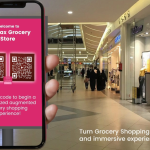Retail commerce: Imagine shopping online, finding a product you like, and then deciding to pick it up in-store. Upon arriving, the store knows exactly what you want, and they even suggest accessories based on your purchase history. You complete your transaction with a simple scan of your phone. This seamless integration of online and offline shopping experiences is unified retail commerce.
So, What Exactly Is Unified Retail Commerce?

Unified retail commerce is like an orchestra where every instrument (or point of interaction) plays in harmony to provide the shopper with a smooth experience. It merges the digital and physical shopping worlds, ensuring a cohesive experience for customers no matter where they engage with the brand, be it online, via mobile, or in-store.
But it’s not just about making shopping easier for the customer. On the retailer’s side, this strategy brings together the front and back ends of the business. In simpler terms, it combines what the customer sees (like the website and in-store displays) with what they don’t see (like inventory management and data analytics). When these work together, it offers a unified view of both the customer and the retailer.
Why Does This Matter?

1. Better Experience for Shoppers: Customers hate disjointed experiences. They don’t want to hear, “It’s available online, but we don’t have it in the store,” or vice versa. Unified retail commerce ensures they get a consistent, efficient shopping experience.
2. Insightful Data for Retailers: With everything integrated, retailers can better understand how customers interact with their brand across various touchpoints. This leads to more informed decisions about marketing, stock management, and more.
3. Staying Competitive: The shopping landscape is changing. With the effects of global events like the COVID-19 pandemic, customers now expect a hybrid shopping experience. Retailers need to evolve to stay relevant.
4. Empowered Store Associates: When store employees have access to integrated data, they can offer personalized experiences to customers, enhancing customer loyalty and boosting sales.
5. Adapting to Changes: The unified strategy offers agility. If another unexpected global event occurs or market trends shift suddenly, retailers with a unified approach can adapt quicker and more efficiently.
In essence, unified retail commerce is all about evolving with the times and meeting the modern shopper’s needs. By adopting this strategy, retailers aren’t just keeping up with the competition; they’re setting themselves up for future success.
For media inquiries, please contact:
Wassim Merheby, CEO, Verofax
Email: [email protected]







